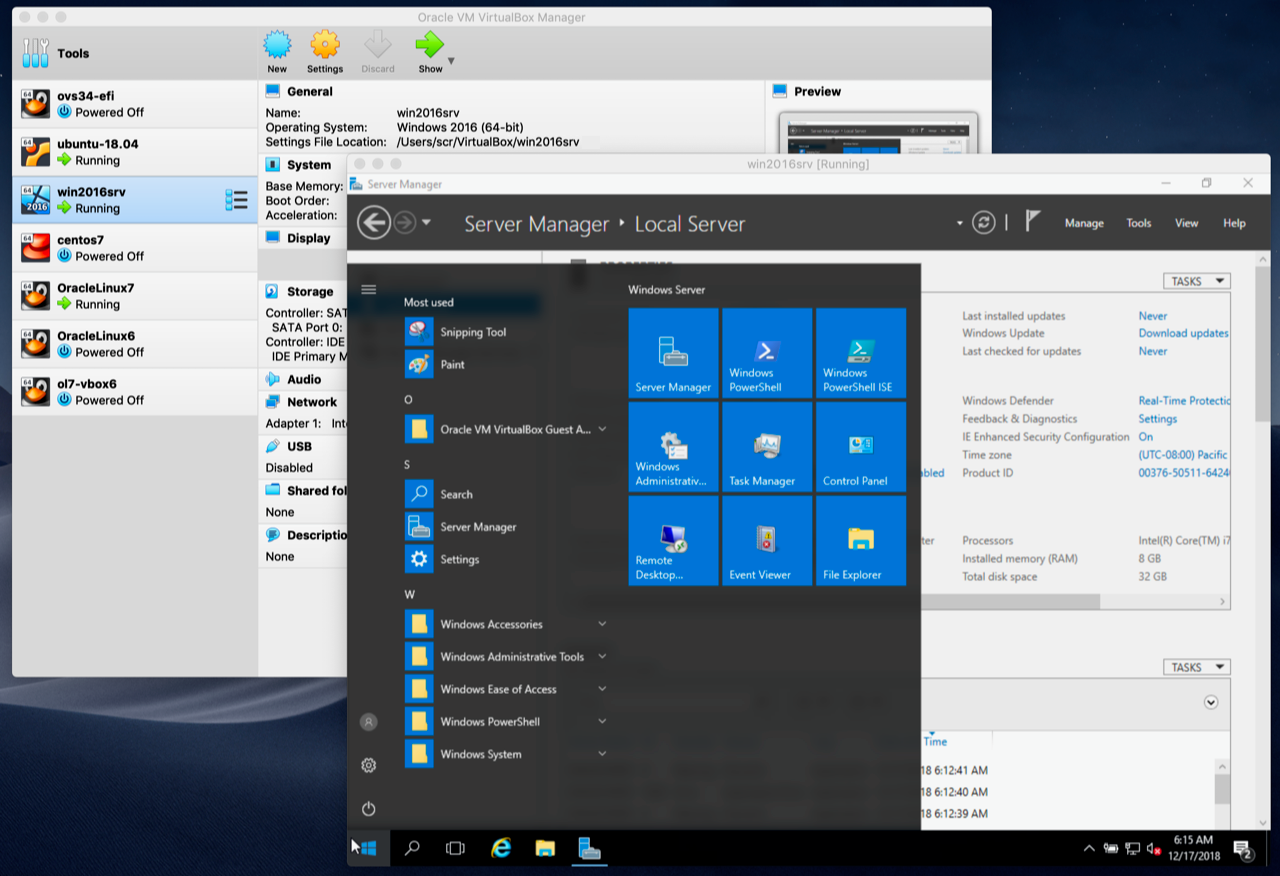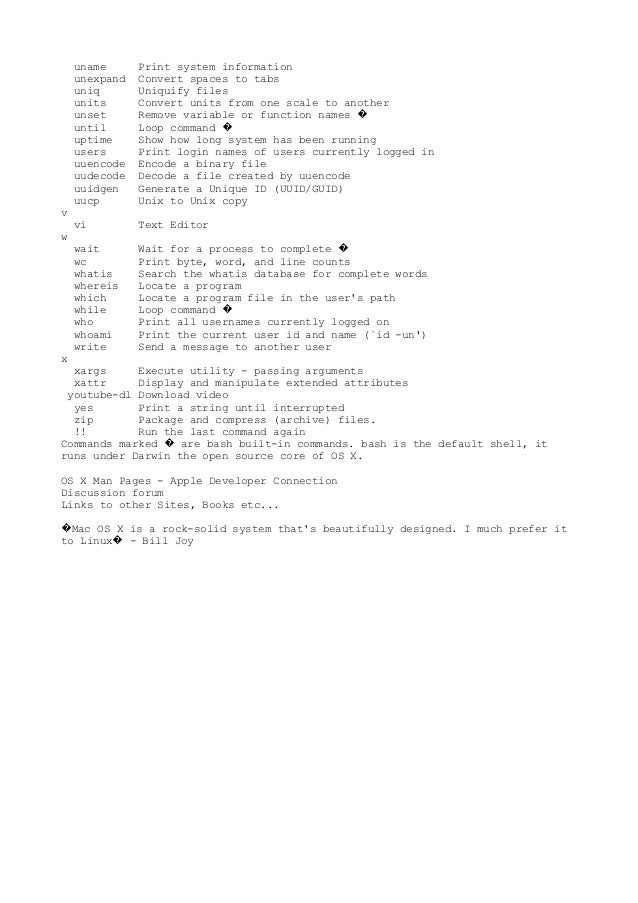List directory contents.
The -1, -C, -x, and -l options all override each other; the last one specified determines the format used.
The -c and -u options override each other; the last one specified determines the file time used.
The -B, -b, -w, and -q options all override each other; the last one specified determines the format used for non-printable characters.
The -H, -L and -P options all override each other (either partially or fully); they are applied in the order specified.
By default, ls lists one entry per line to standard output; the exceptions are to terminals or when the -C or -x options are specified.
File information is displayed with one or more <blank>s separating the information associated with the -i, -s, and -l options.

For example, if you've installed a more recent version of rsync, this hint will load Apple's rsync man page which describes the behavior of the version of rsync included in Mac OS X, and that may have different options than the one you're running locally.
10.3: Use the x-man-page URL type to open UNIX man pages Authored by: jantonc on Feb 01, '07 03:41:34PM in 10.4 the URL schemes are x-man-page, ssh, and telnet. Mac OS X: Convertir une page web en pdf - Conseils pratiques - macOS Mac os x 10.6.8 - Forum - MacOS.
The Long Format
If the -l option is given, the following information is displayed for each file: file mode, number of links, owner name, group name, number of bytes in the file, abbreviated month, day-of-month file was last modified, hour file last modified, minute file last modified, and the pathname.
In addition, for each directory whose contents are displayed, the total number of 512-byte blocks used by the files in the directory is displayed on a line by itself, immediately before the information for the files in the directory. If the file or directory has extended attributes, the permissions field printed by the -l option is followed by an @ character. Otherwise, if the file or directory has extended security information, the permissions field printed by the -l option is followed by a + character.

If the modification time of the file is more than 6 months in the past or future, then the year of the last modification is displayed in place of the hour and minute fields.
This guide helps you get started using Pages 10.3 on your Mac. To see the version of Pages on your Mac, choose Pages About Pages (from the Pages menu at the top of your screen). To explore the Pages user guide, click Table of Contents at the top of the page, or enter a word or phrase in the search field. We get this question often, and not to worry; exiting the man command is extremely easy and it’s universal, meaning you can quit man the same on any unix OS that includes the feature, whether that is Mac OS, Mac OS X, linux, BSD, or otherwise. The Trick to Exiting man Command: q. Just press “q” key to quit out of a man page.
If the owner or group names are not a known user or group name, or the -n option is given, the numeric ID's are displayed.
If the file is a character special or block special file, the major and minor device numbers for the file are displayed in the size field. If the file is a symbolic link, the
pathname of the linked-to file is preceded by ``->'.
The file mode printed under the -l option consists of the entry type, owner permissions, and group permissions. The entry type character describes the type of file, as follows:
The next three fields are three characters each: owner permissions, group permissions, and other permissions. Each field has three character positions:
1. If r, the file is readable; if -, it is not readable.
2. If w, the file is writable; if -, it is not writable.
3. The first of the following that applies:
Macos Man Pages Location
S If in the owner permissions, the file is not executable and set-user-ID mode is set. If in the group permissions, the file is not executable and set-group-ID mode is set.
s If in the owner permissions, the file is executable and set-user-ID mode is set. If in the group permissions, the file is executable and setgroup-ID mode is set.
x The file is executable or the directory is searchable.
- The file is neither readable, writable, executable, nor set-user-ID nor set-group-ID mode, nor sticky. (See below.)
These next two apply only to the third character in the last group (other permissions).
T The sticky bit is set (mode 1000), but not execute or search permission. (See chmod(1) or sticky(8).)
t The sticky bit is set (mode 1000), and is searchable or executable. (See chmod(1) or sticky(8).)
Mac Os X Sed Man Page
ls-F passes its arguments to ls if it is given any switches, so `alias ls ls-F' generally does the right thing.
Color ls Listings
To set up colour labeling, put the following in your ~/.bash_profile file (assuming bash is your default macOS shell):
export CLICOLOR='Yes'
Mac Os X Man Pages Download
Other ls Environment Settings
Examples
List the filenames in the current folder
$ ls
List the filenames with their characteristics (Size, Privs, Owner, etc)
$ ls -l
List the filenames with Size, Privs, Owner + Flags (-o option)
$ ls -lo
List the filenames sorted by time modified (most recent first):
$ ls -lt
List ALL files (including hidden)
$ ls -a
List all the file links in the current folder - in the ouptut of ls each symbolic directory has l permission at the begining of the permission flags, so grep ^l will list only symbolic links:
$ ls -lR | grep ^l
A less cryptic method is to use find . -type l
Include a special character at the end that tells you what kind of file it is
$ ls -F
List .jpg files
$ ls *.jpg
Filenames beginning with 'a'
$ ls a*
Filenames containing 'att'
$ ls *att*
Long list + show all + follow symlinks w. dest
$ ls -lahL
List sorted by Size
$ ls -l | sort -n +4
or
$ ls -lrS
List all subdirectories
$ ls *
Loop through all the files in a folder, note the use of quotes to cope with filenames that include spaces:
$ ls | while read FILE; do echo '$FILE'; done
Get Man Pages Mac Os
List all files, one per line, including subdirectories - using find
$ find ~/Documents/ -type f
“If the doors of perception were cleansed every thing would appear to man as it is, infinite” ~ William Blake
Related macOS commands:

chmod - Change access permissions.
chflags - Change a file or folder's flags.
find - Search for files that meet a desired criteria.
lsbom - List a bill of materials file.
quota - Display disk usage and limits.
rm - Remove files.
rmdir - Remove folder(s).
sort - Sort text files.
stat - Display the status of a file.
sticky - Sticky text and append-only directories.
wc - Print byte, word, and line counts.
Parsing the output of ls - wooledge.org
Some rights reserved
